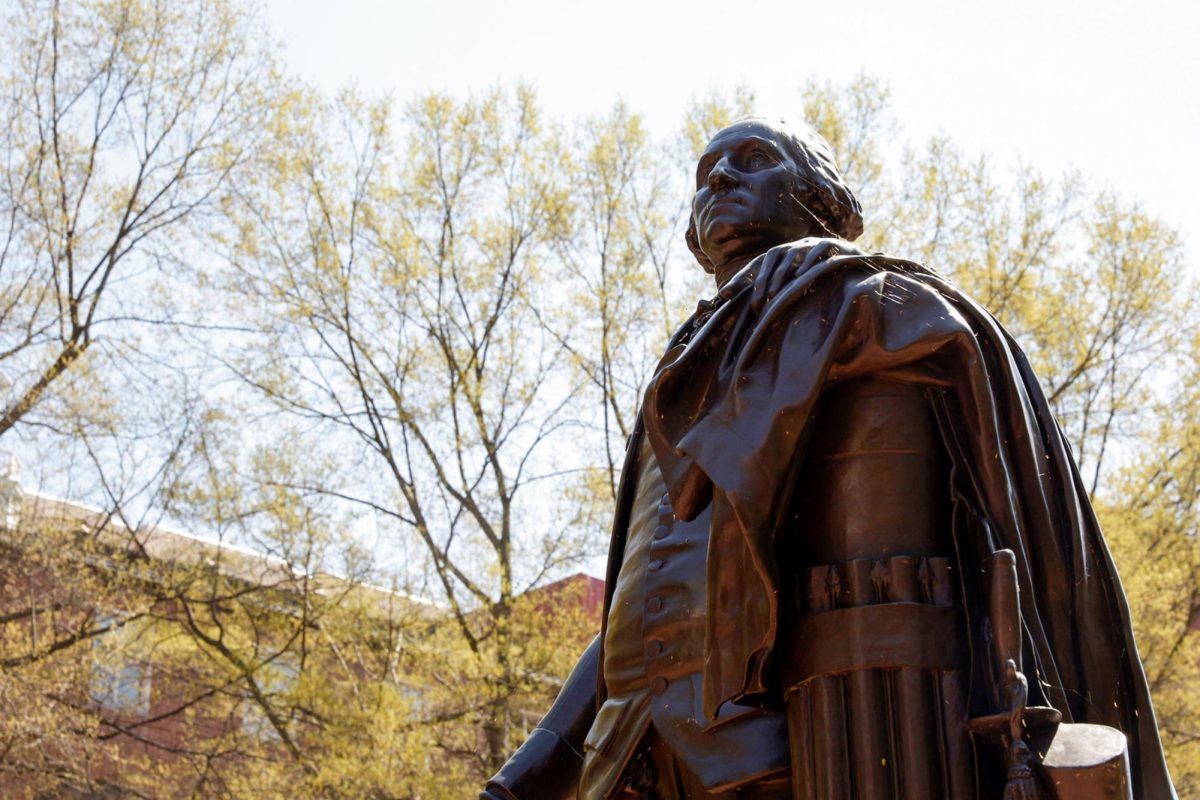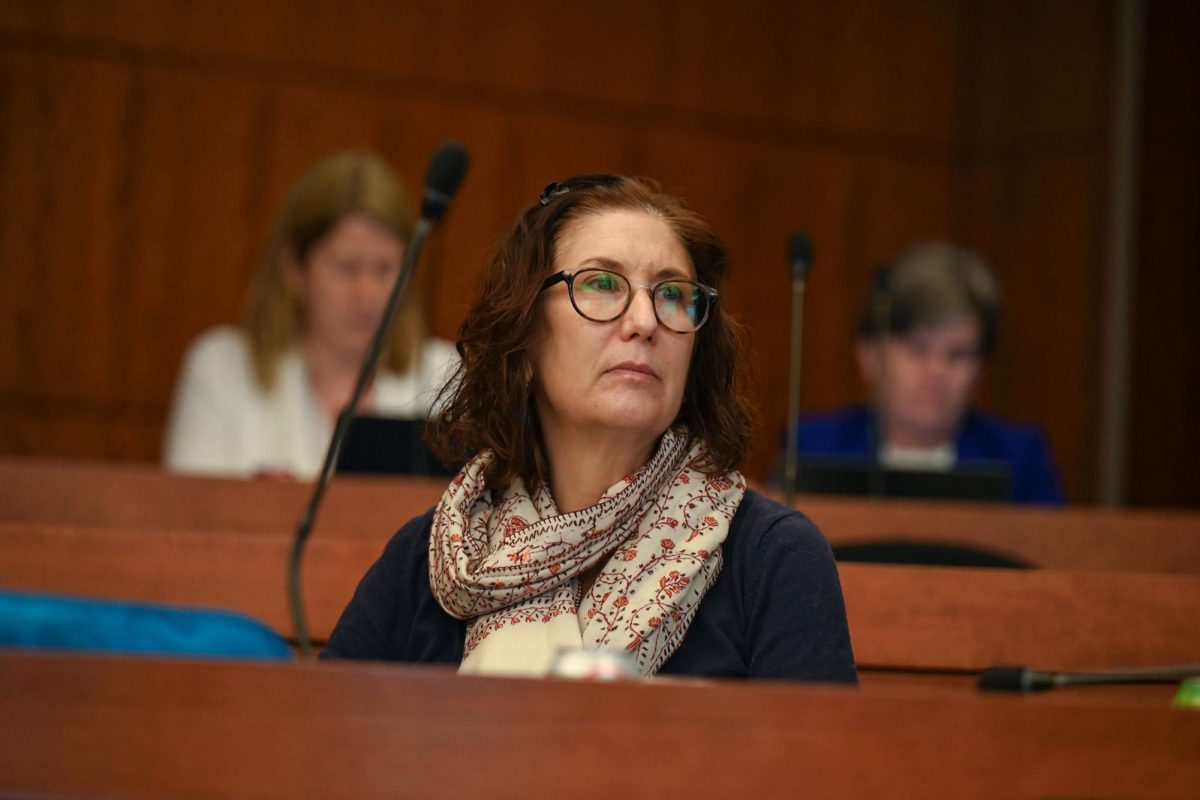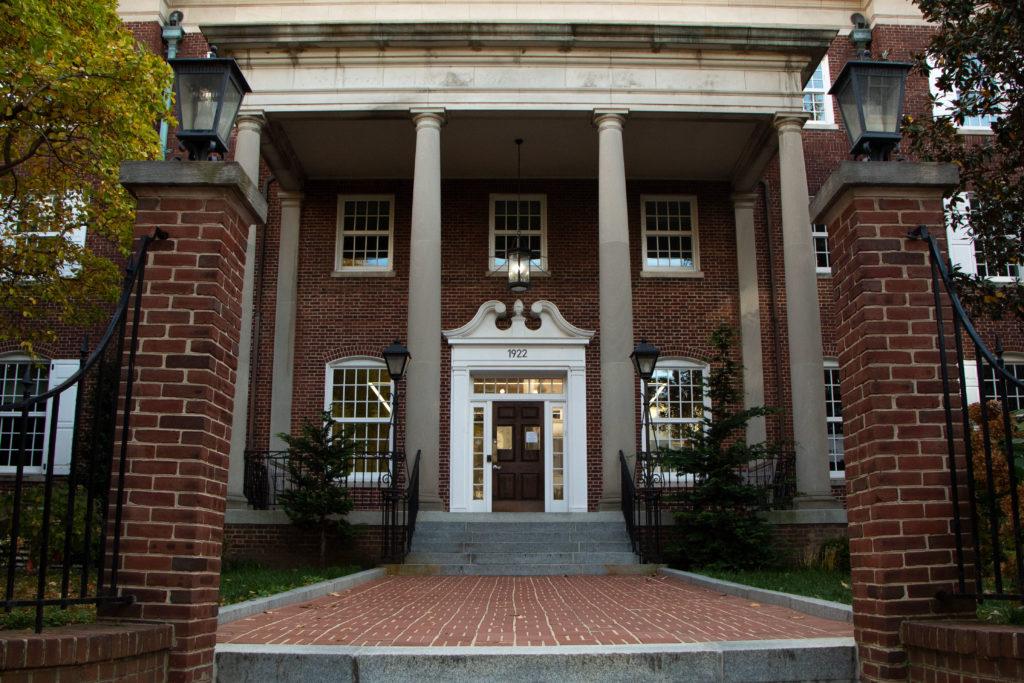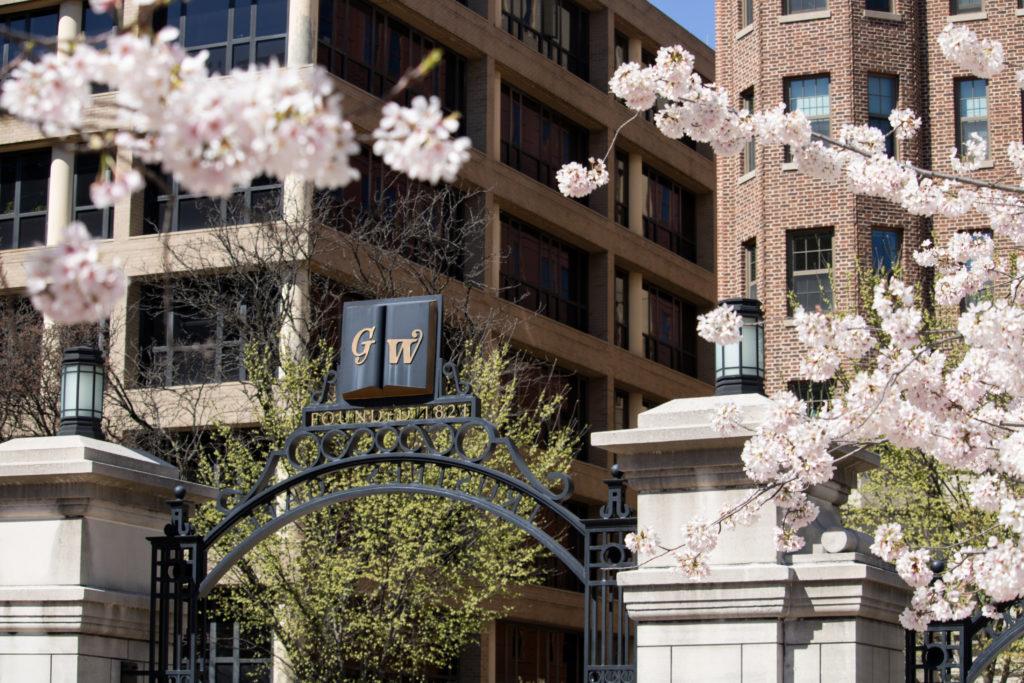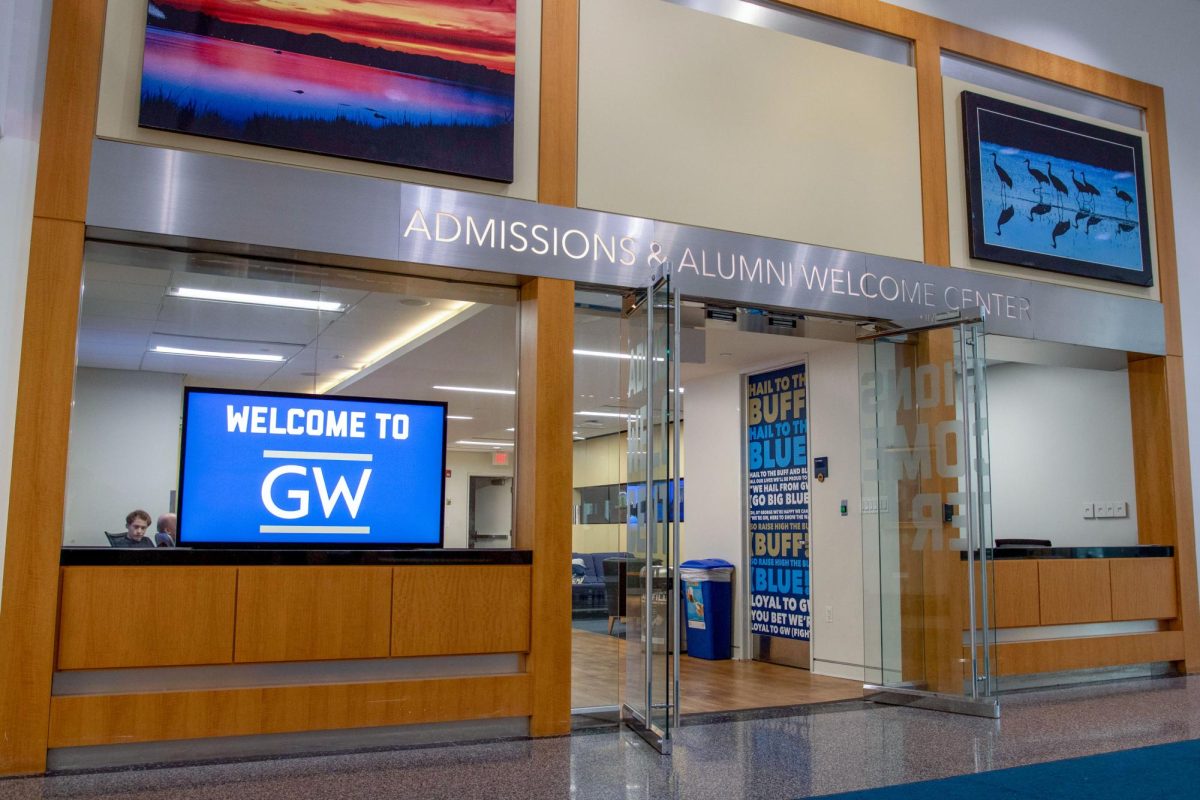The four-year graduation rate dropped by 4 percent from the Class of 2021 to the Class of 2022, according to the Annual Core Indicators Report presented at the Faculty Senate meeting earlier this month.
Provost Chris Bracey said the graduation rate declined from 79.2 percent for students who entered the University in 2017 to 75.2 percent for students who enrolled in 2018. Bracey said about 110 students who entered the University in 2018 left the school “largely” due to GW’s shift to remote learning and reduced campus living during the 2020-21 school year, with many students transferring to universities with in-person instruction.
“The pandemic effect is real,” Bracey said at the meeting. “And I can tell you that it’s likely not to be limited just to the freshman class of 2018, but it will likely impact the freshman class of 2019 and 2020.”
He said 90 students from the Class of 2022 took a leave of absence during their time at GW, exceeding the “handful” of students who took a leave of absence in prior graduating classes. He said the 75.2 percent rate accounts for students who graduated through 2022, but the graduation rate for the class had reached closer to 79 percent as of early March because of processing delays for additional degrees and transferred credit for some students.
The report states students who entered GW in 2021 had a retention rate of 89.6 percent, a 1.1 percent decrease from the previous year’s retention rate of 90.7 percent. Students who entered in 2019 had a retention rate of 88 percent. Bracey said the stagnation of GW’s student retention rate displays the “slow and difficult” pandemic recovery.
“What you really are seeing here is a profound impact that the pandemic had on the ability of us to retain students,” Bracey said. “We should begin to see recovery of the four-year graduation rate for the entering class of 2021.”
The report states the number of freshmen increased from 2,571 students in the fall 2021 semester to 2,941 students who enrolled in the fall 2022 semester, surpassing the peak freshman class size in the last eight years, set at 2,845 students in fall 2018.
Bracey said total international student enrollment grew by 16 percent from 1,085 students in the fall 2021 semester to 1,260 students in the fall 2022 semester. He said this academic year’s international student enrollment total is still 20 percent shy of the latest pre-pandemic international student enrollment level of 1,614 students during the fall 2019 semester.
He said enrollment of international students from China – who make up a majority of GW’s international student population – faced a “significant” decrease after fall 2019 due to the country’s zero-COVID policies but still make up a majority of international students nationwide. There are 1,100 international students from China enrolled at GW this academic year, down from the 2,184 international students from China enrolled at GW in 2019, according to institutional data.
“If we exclude students from China, this year we enrolled the largest number of international students from other countries such as India, South Korea, Saudi Arabia, Azerbaijan, Egypt, Brazil and Nigeria,” Bracey said. “And much of this growth is happening with our graduate programs. But that’s a very positive sign for us.”
Earlier in the meeting, interim University President Mark Wrighton introduced incoming University President Ellen Granberg to share her early “impressions” of the University.
Granberg said she’s visited the Foggy Bottom Campus twice and met with the Faculty Senate Executive Committee, Student Association President Christian Zidouemba and Vice President Yan Xu and Wrighton since Board of Trustees Chair Grace Speights introduced her as GW’s next permanent leader in January. Granberg said she has started “in-depth,” one-on-one meetings with trustees, and she plans to meet with each before her term begins July 1.
She said she and Faculty Senate Executive Committee Chair Jim Tielsch are reviewing the shared governance principles the Board unanimously approved in May. She said they will read the faculty code and Faculty Organization Plan to familiarize herself with the structure of faculty in the Faculty Senate.
“There is a feeling that GW, for a long time, has been on the brink of reaching its next level, and there seems to be a lot of interest and excitement about moving forward,” Granberg said.
She said establishing a sense of purpose and identity based on student experience and faculty research rather than an identity that relies on the University’s physical location has been a “prominent” theme in discussions with officials about GW’s future.
“I have a lot more to learn,” Granberg said. “I am starting to think about strategic planning, about possible initiatives. I’m looking forward to discussing those with the Senate in the future.”
Eric Grynaviski, the co-chair of the Faculty Senate’s Physical Facilities Committee and an associate professor of political science and international affairs, presented recommendations to treat faculty as stakeholders in campus planning at the meeting on faculty involvement in future campus planning.
Grynaviski said the Strategic Campus and Facilities Master Plan, which former Chief Financial Officer Mark Diaz and Vice President for Safety and Facilities Scott Burnotes created in 2020 to start brainstorming plans to redesign University buildings and the layout of the campus, had “narrow” faculty involvement with only two faculty members included in the planning process.
A 10-person committee of faculty, staff and students contributed to the Strategic Campus and Facilities Master Plan, which included Ellen Costello, the director of the physical therapy program and former chair of the Faculty Senate Committee on Physical Facilities, and Anton Sidawy, a professor of surgery and former faculty senator.
In 2007, city officials granted GW the right to develop about 3.5 million square feet of real estate on the Foggy Bottom Campus, and the current plan features a potential renovation to Gelman Library and a “reimagined” Kogan Plaza.
He said faculty from GW’s peer schools, like New York and Wake Forest universities, contributed to campus planning of the “academic core” of their campus but were not involved otherwise. He said he recommends officials provide multiple avenues for faculty input in campus planning, including “functional” committees on housing, dining and traffic.
“These were plans that were very broad, but they had very limited faculty inclusion, which made that planning process less effective because they didn’t understand the lived experiences of all the different stakeholders that exist on campus,” Grynaviski said.
Kim Roddis, a member of the Faculty Senate Executive Committee, presented a resolution of appreciation at the meeting for outgoing Faculty Senate Executive Committee Chair Jim Tielsch, whose tenure on the committee will expire as it reaches its three-year limit in April.
Roddis said Tielsch was “instrumental” in the selection of Granberg as the next University president and in advancing the principles of shared governance, which the Board approved last May.
Tielsch replaced Arthur Wilson, a faculty senator and an associate professor of finance, last April as chair.
“The Faculty Senate of the George Washington University hereby expresses its deepest admiration, appreciation and gratitude to Professor James Tielsch for his distinguished service,” Roddis said.
Grace Chinowsky, Eóighan Noonan, Roxie Parker and Duc Than contributed reporting.




